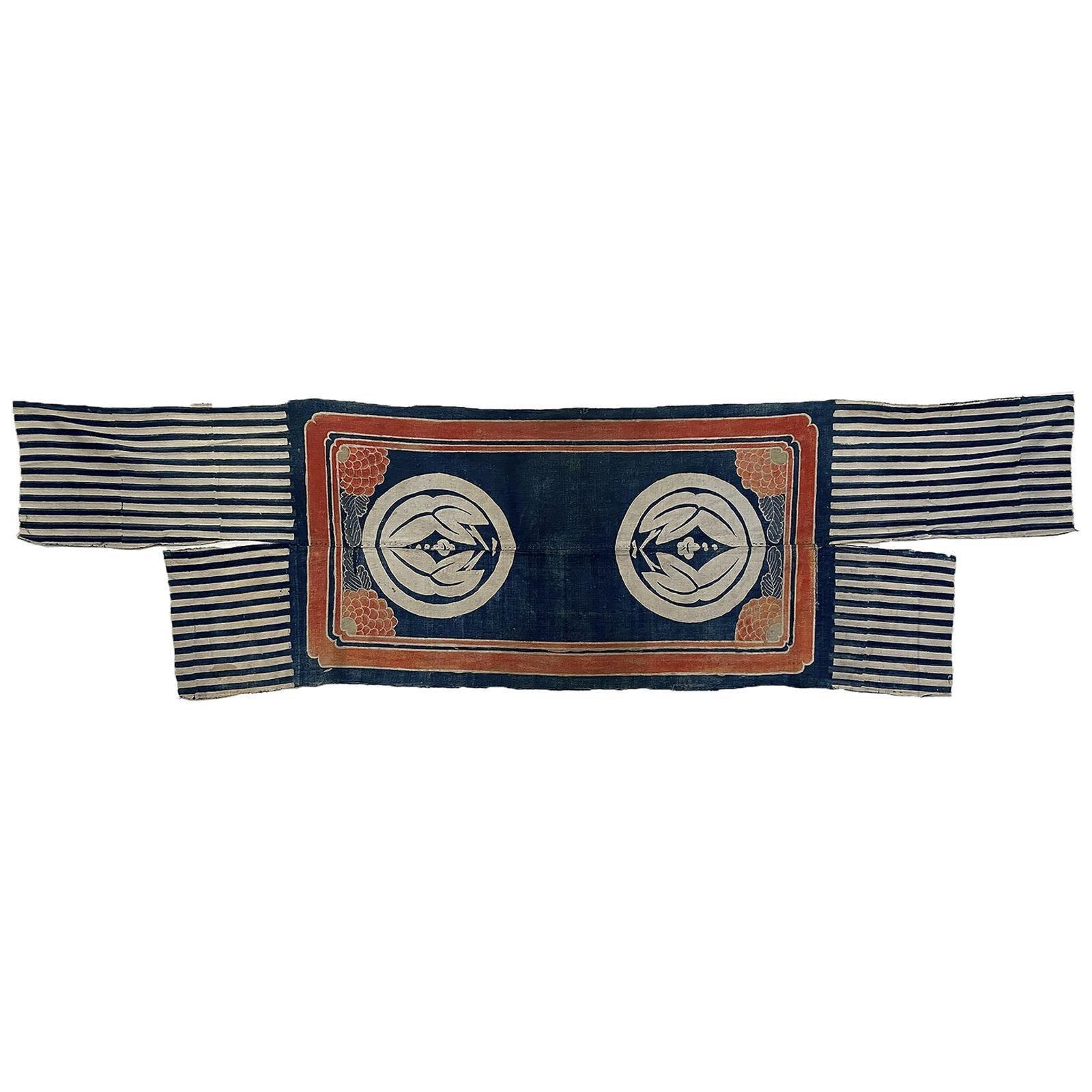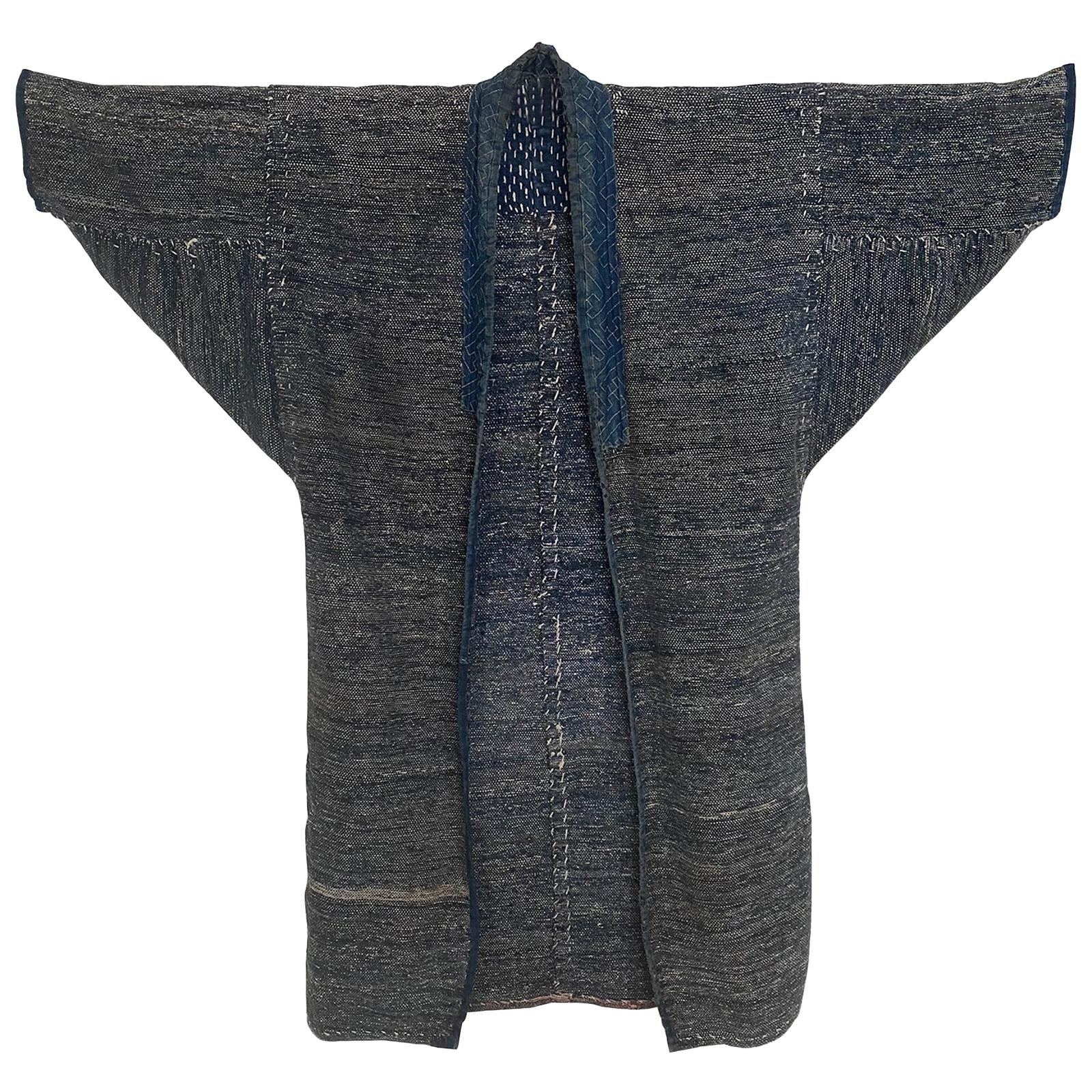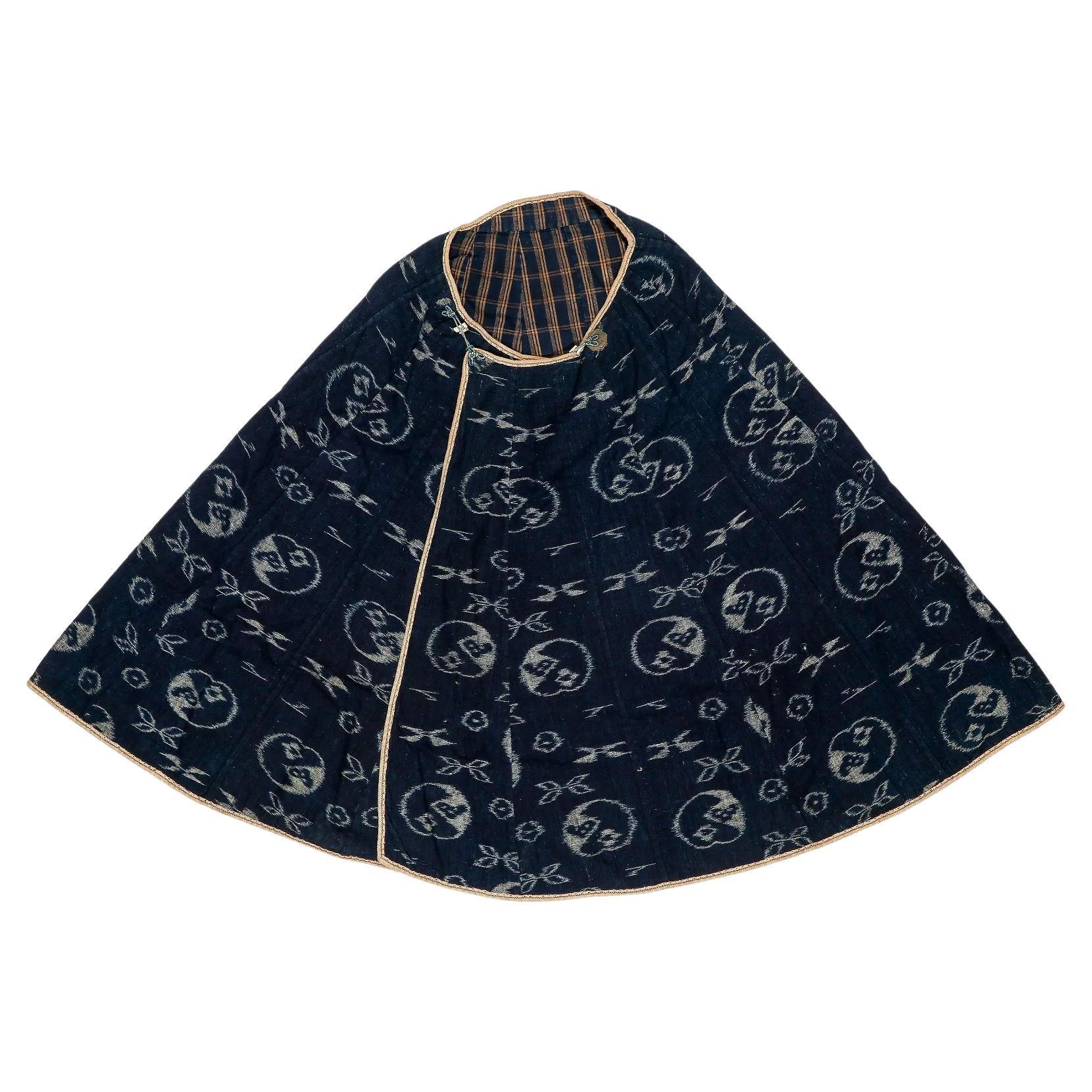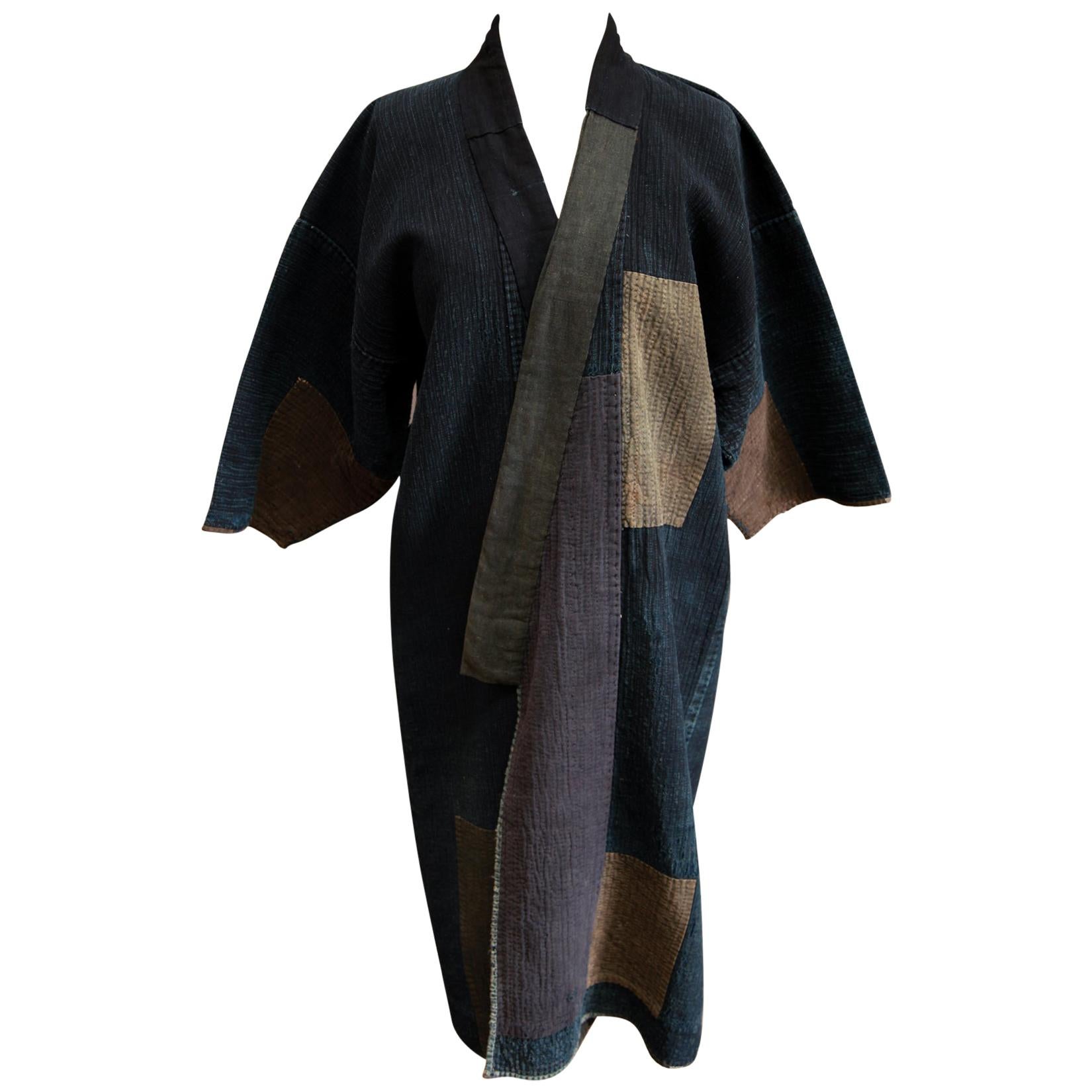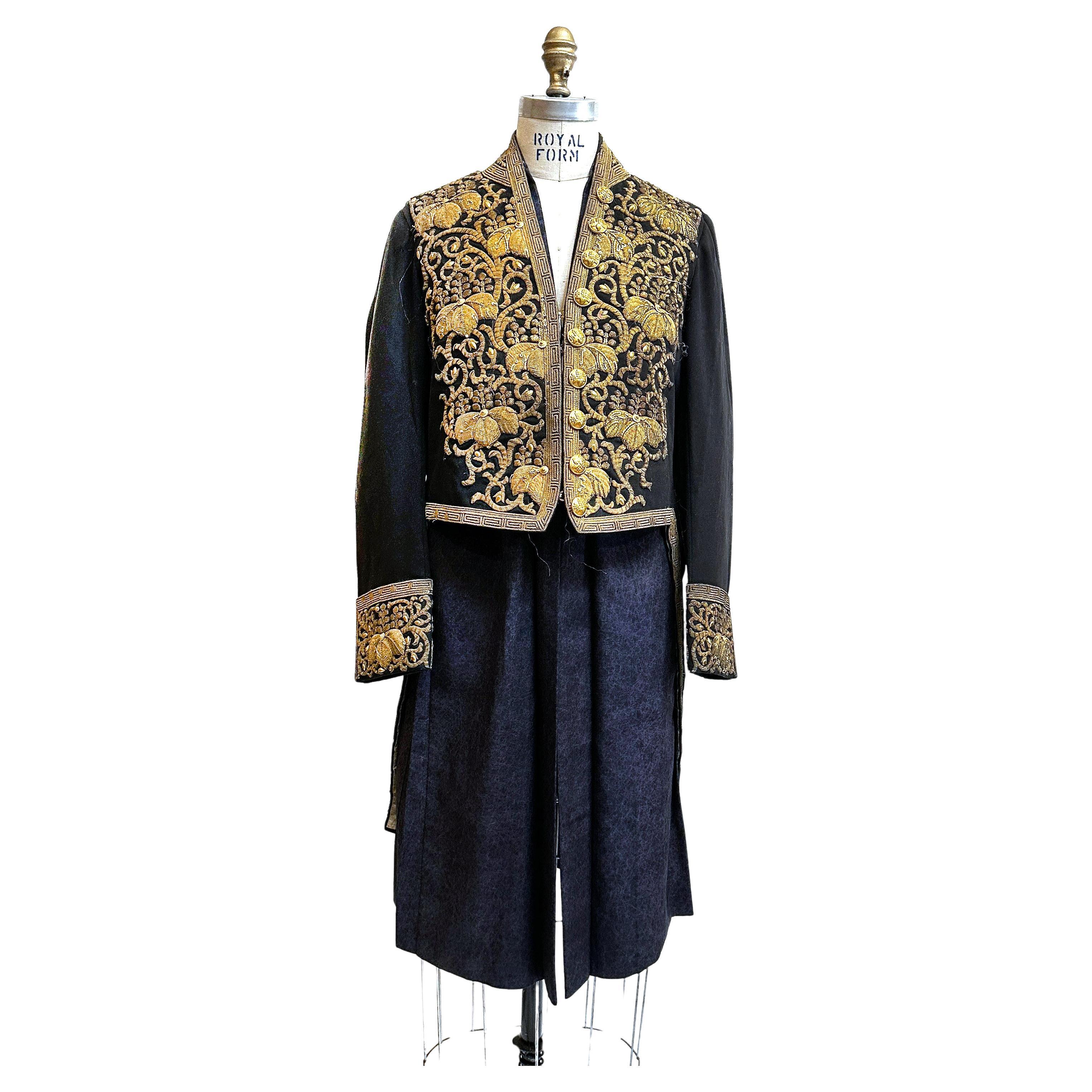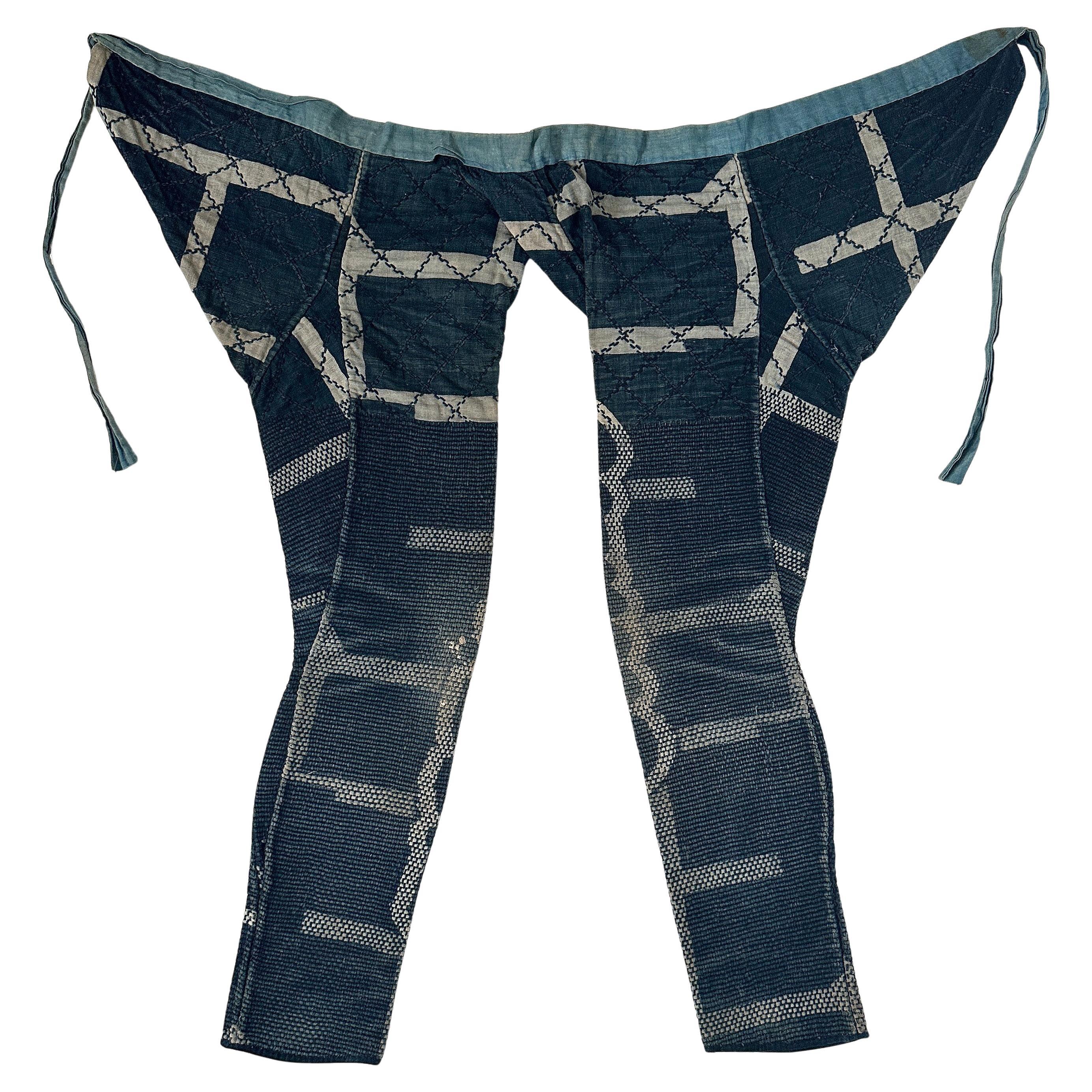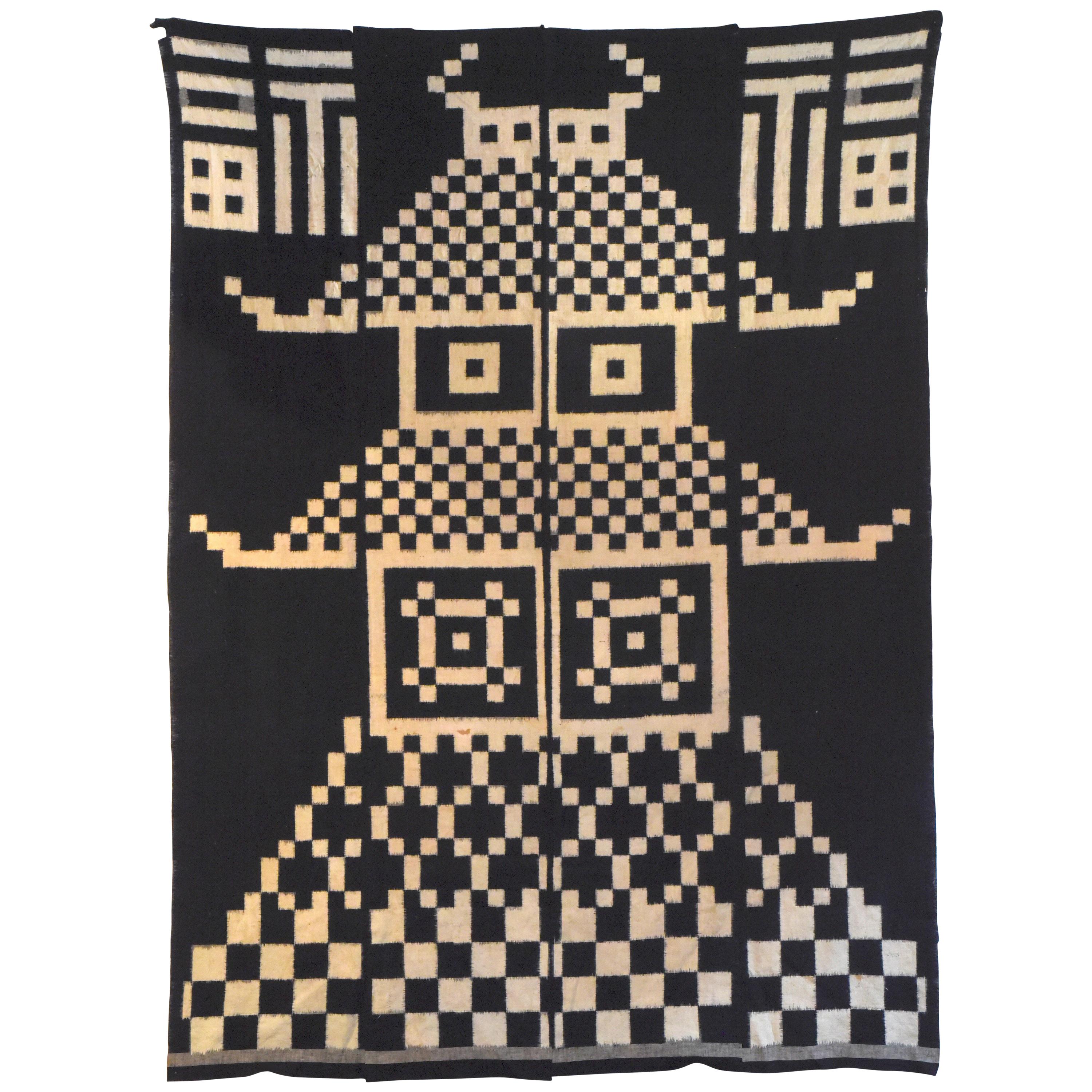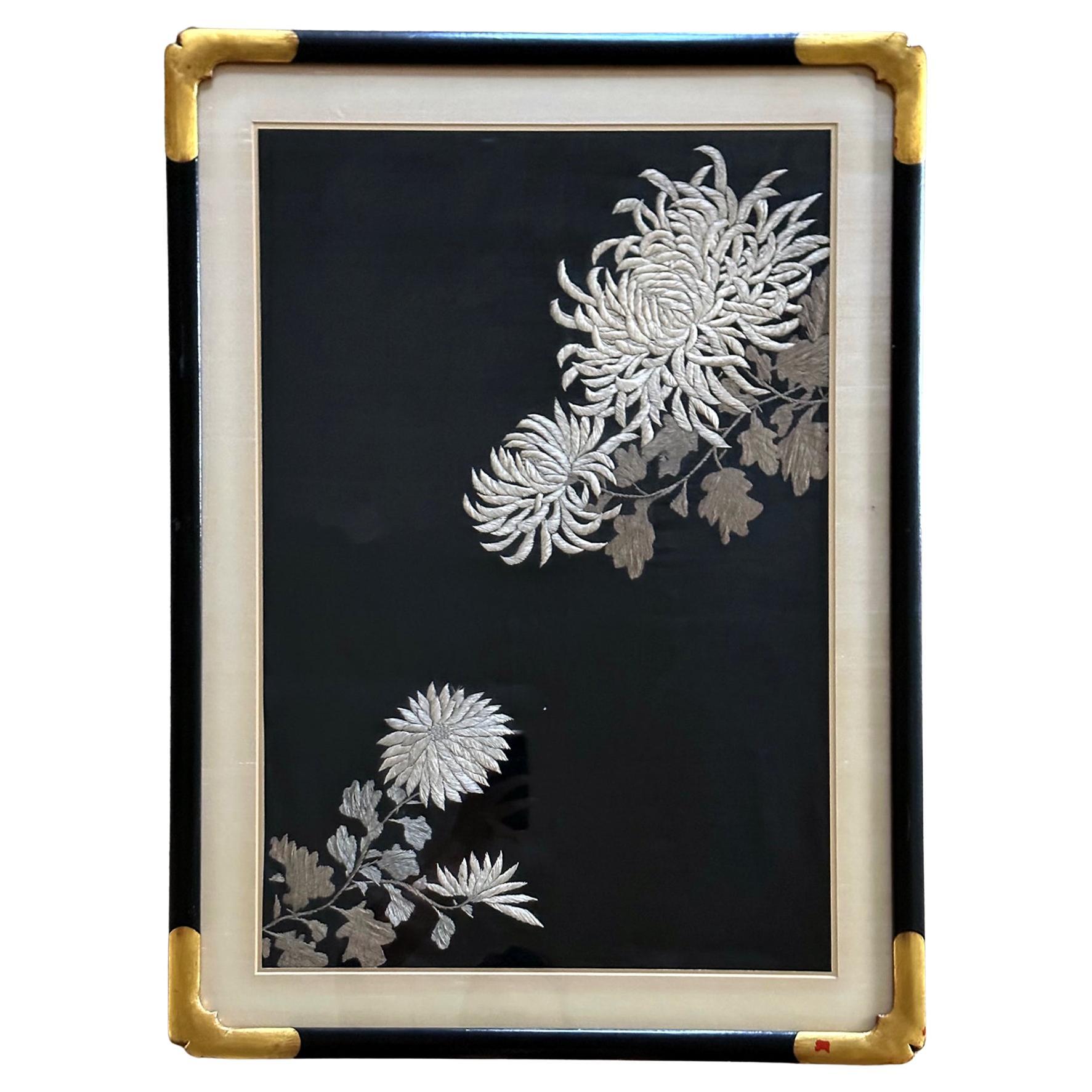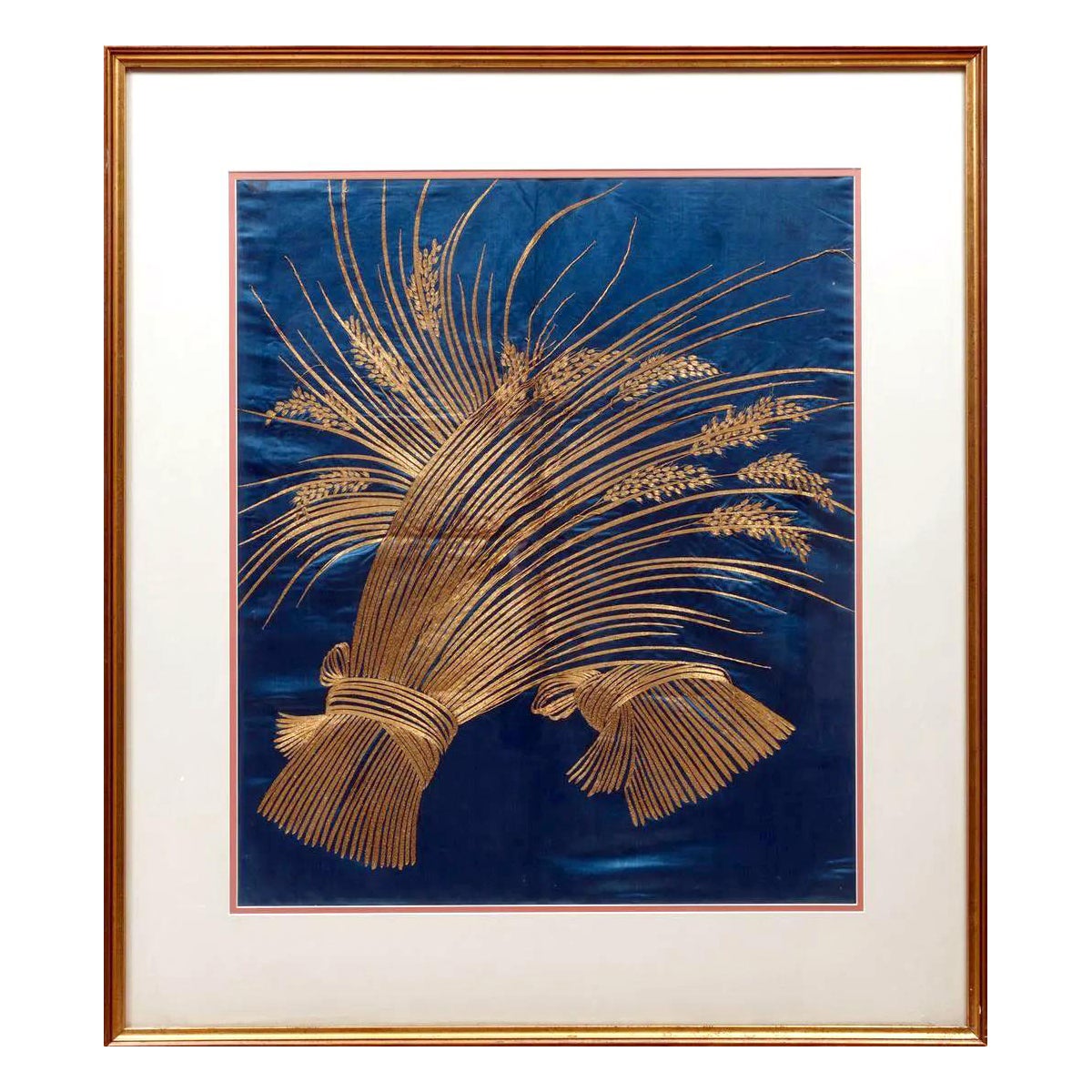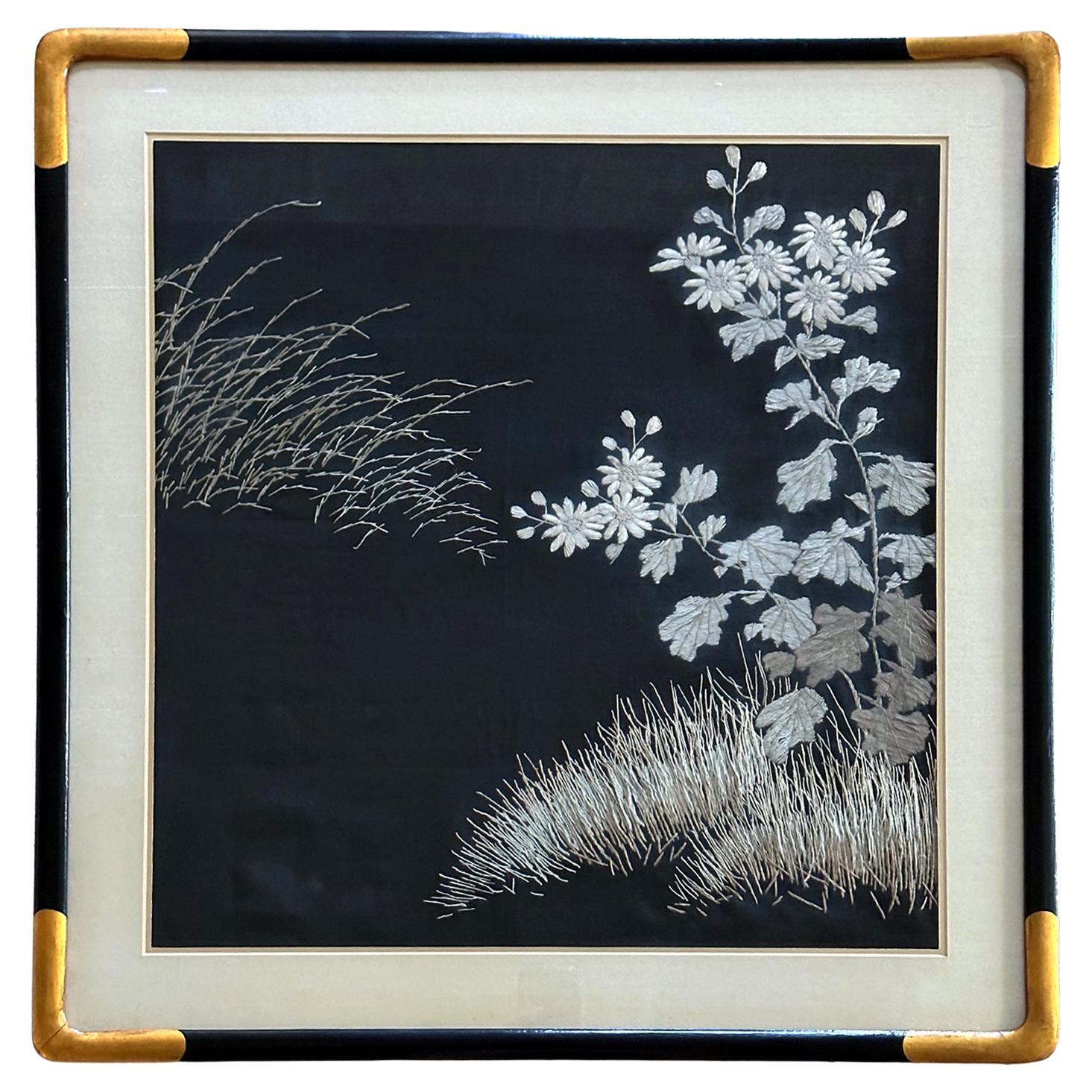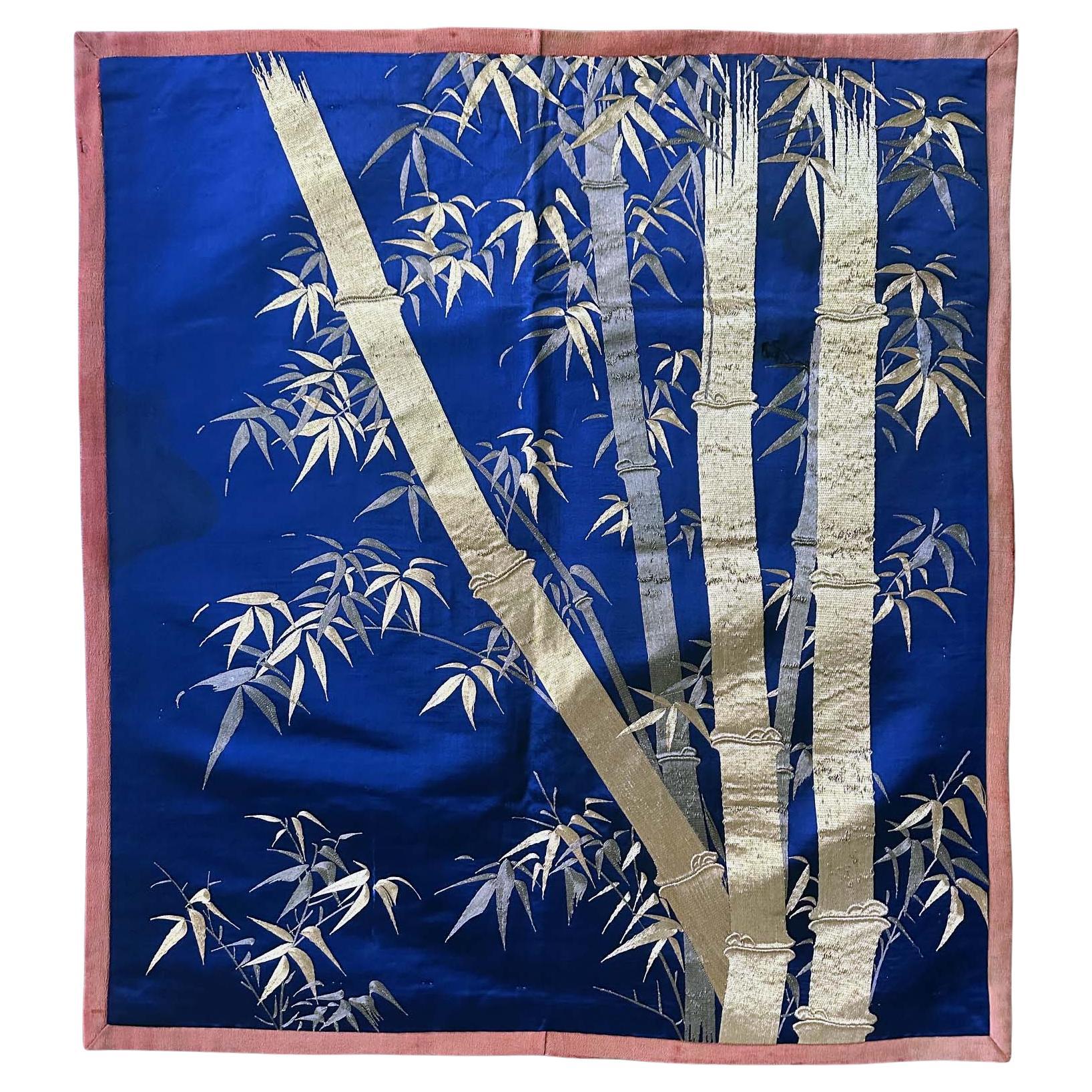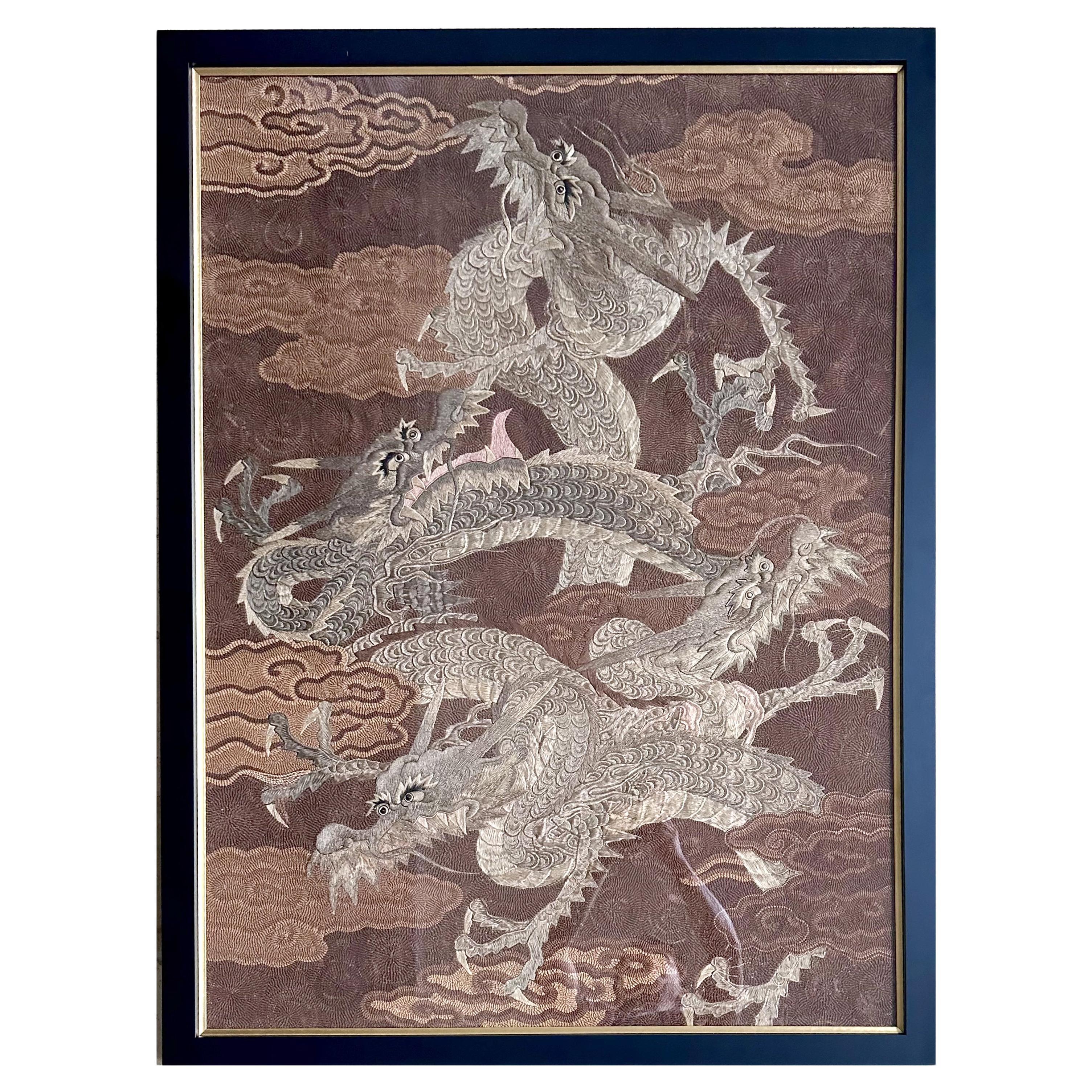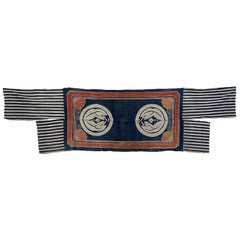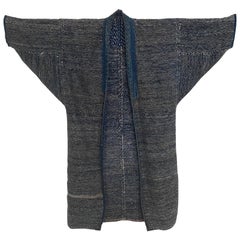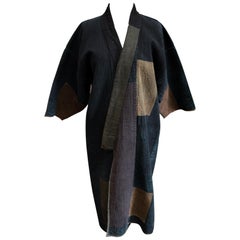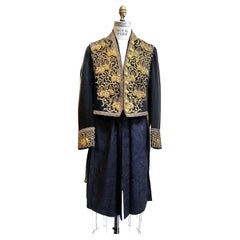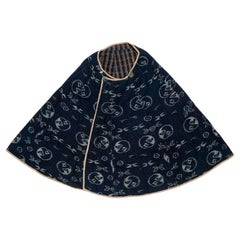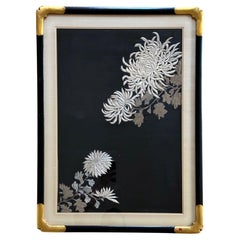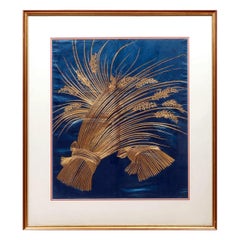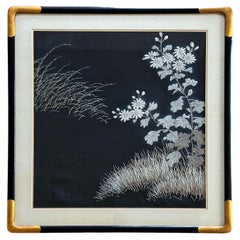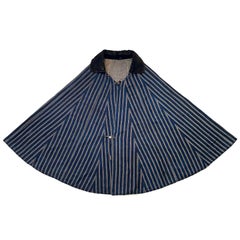
Meiji Period Cotton Kappa 'Rain Cape', Japan
View Similar Items
Want more images or videos?
Request additional images or videos from the seller
1 of 9
Meiji Period Cotton Kappa 'Rain Cape', Japan
Price:$760
$950List Price
About the Item
- Dimensions:Height: 43 in (109.22 cm)Width: 92 in (233.68 cm)Depth: 0.025 in (0.64 mm)
- Style:Meiji (Of the Period)
- Materials and Techniques:Cotton,Hand-Woven
- Place of Origin:
- Period:
- Date of Manufacture:Late 19th-Early 20th Century
- Condition:Replacements made: Lining was likely replaced at one time. Repaired: One small 1" tear was repaired. Wear consistent with age and use. Minor signs of wear due to age.
- Seller Location:Point Richmond, CA
- Reference Number:Seller: GUJP15331stDibs: LU1778220013062
About the Seller
5.0
Platinum Seller
Premium sellers with a 4.7+ rating and 24-hour response times
Established in 1999
1stDibs seller since 2015
687 sales on 1stDibs
Typical response time: 2 hours
Authenticity Guarantee
In the unlikely event there’s an issue with an item’s authenticity, contact us within 1 year for a full refund. DetailsMoney-Back Guarantee
If your item is not as described, is damaged in transit, or does not arrive, contact us within 7 days for a full refund. Details24-Hour Cancellation
You have a 24-hour grace period in which to reconsider your purchase, with no questions asked.Vetted Professional Sellers
Our world-class sellers must adhere to strict standards for service and quality, maintaining the integrity of our listings.Price-Match Guarantee
If you find that a seller listed the same item for a lower price elsewhere, we’ll match it.Trusted Global Delivery
Our best-in-class carrier network provides specialized shipping options worldwide, including custom delivery.More From This Seller
View AllJapanese Horse Trapping, "Uma-No-Haragake", Tsutsugaki, Cotton, Meiji Period
Located in Point Richmond, CA
Japanese horse trapping, "Uma-No-Haragake", Tsutsugaki, cotton, Meiji period
This type of haragake is called yuiage ("tied up"). The central portion covered the belly of the horse an...
Category
20th Century Japanese Meiji Textiles
Materials
Cotton
Saki-Ori Farmers Coat, Northern Japan, Meiji Period
Located in Point Richmond, CA
Saki-ori farmers coat, Northern Japan, Meiji period
A very heavy and substantial saki-ori coat, made of cotton with an indigo kasuri lapel. Several patches of hand sewn stitching ...
Category
20th Century Japanese Meiji Textiles
Materials
Cotton
Japanese Sashiko-stitched Cotton Rodogi Work Coat, Early 20th Century
Located in Point Richmond, CA
Sashiko-stitched cotton Rodogi work coat, early 20th century, Yamagata Prefecture, Japan
A full length coat composed of indigo-dyed cotton with vertical bands of sashiko stitching w...
Category
20th Century Japanese Meiji Textiles
Materials
Cotton
$1,400 Sale Price
20% Off
Japanese Court Uniform for Imperial Appointee, 19th Century
Located in Point Richmond, CA
Court Uniform for Imperial Appointee, c. 1887.
Wool with gold brocade.
Court and military uniforms in emulation of European ensembles were officially adopted by the Japanese gover...
Category
Antique 19th Century Japanese Meiji Textiles
Materials
Wool, Brocade
Antique Japanese Farmer's Pants, Indigo, Cotton, Meiji
Located in Point Richmond, CA
Japanese farmer’s indigo cotton pants. Woven and dyed cotton, worn by farmers working in the field. Narrow legs and ties around the waist. As shown, the pants have been well used ...
Category
Early 20th Century Japanese Meiji Textiles
Materials
Cotton
Meiji Period Japanese Indigo Double Ikat Futon Cover
Located in Point Richmond, CA
Meiji period Japanese Indigo double ikat futon cover
Japanese futon cover, a double ikat pattern in four panels depicting Kumamoto Castle with im...
Category
Antique 1890s Japanese Meiji Textiles
Materials
Cotton
You May Also Like
Japanese Indigo Kasuri Ikat Traveling Cape
Located in Atlanta, GA
Known in Japanese as Bozugappa (priest's raincoat), this cape-like garment was worn by the travelers in Japan circa late 19th century to early 20th century (end of Meiji period). Derived from the cape worn by the Portuguese missionary, who first arrived in Japan in mid-16th century, this type of cape was originally reserved for the Japanese military...
Category
Antique 1890s Japanese Meiji Textiles
Materials
Cotton, Linen
Framed Japanese Embroidery Textile Panel Meiji Period
Located in Atlanta, GA
A Japanese textile panel with embroidered picture work circa late Meiji period (1900s) presented in a gilt wood frame with silk mat. The work de...
Category
Antique Early 1900s Japanese Meiji Textiles
Materials
Silk, Wood
Framed Japanese Embroidery Silk Panel Meiji Period
Located in Atlanta, GA
A Japanese silk embroidery Fukusa panel presented in mat and glazed gilt wood frame circa 1890-1910s (end of Meiji Period). The blue silk pane...
Category
Antique 1890s Japanese Meiji Textiles
Materials
Silk
Framed Japanese Embroidery Textile Panel Meiji Period
Located in Atlanta, GA
A Japanese textile panel with embroidery needlework circa late Meiji period (1900s) presented in a gilt wood frame with silk mat. The work depic...
Category
Antique Early 1900s Japanese Meiji Textiles
Materials
Silk, Wood
Japanese Embroidery Silk Bamboo Fukusa Meiji Period
Located in Atlanta, GA
A Japanese silk embroidery Fukusa panel circa 1890-1910s toward the end of Meiji Period. On the deep blue satin background, the artist showcases a clump of bamboos in a realistic sty...
Category
Early 20th Century Japanese Meiji Textiles
Materials
Silk
Framed Japanese Embroidery Dragon Tapestry Meiji Period
Located in Atlanta, GA
A striking Japanese embroidery tapestry circa 1890s Meiji period presented in a gilt wood frame under glaze. The design features four dragons coiling and slithering in the clouds. The most auspicious mythological creature, dragon was a very popular motif in Japanese textile art. Viewing this particular piece, one is struck by the superb craftsmanship with the profuse use of silver threads in satin stitches and complex chain stich coiling that create the background. The slight relief technique was also used on parts of the dragon heads, rendering the piece a strong sense of dimension and motion. The textile itself measures about 32.5"x46".
Japanese Meiji textiles were widely exhibited in the west during turn of the 20th century at the international exposition. It was used to showcase the Japanese aesthetics with the techniques at their pinnacle. These expositions solidified the country's images overseas and felled the Japanese craze in the west, which turned out to be a long-lasting influence on the western art. Many pieces were purchased and stayed in the west. As there is no brocade border present, the piece is likely the main part with the central motifs of a larger tapestry and was later framed for display.
For two similar dragon tapestries...
Category
Antique 1890s Japanese Meiji Textiles
Materials
Textile, Wood
Recently Viewed
View AllMore Ways To Browse
Priest Japanese
Cape Velvet Lining
Asian Wall Hanging
Textile Art Japan
Chinese Framed Silk
Japanese Kimono Art
Vintage Embroidery Art
Silk Embroidered Panels
Framed Textiles Asian
Asian Style Sofa
Asian Thread Embroidery
Large Suzani
Chinese Silk Embroidery
Large Suzani Textile
Prayer Mat
Antique Japanese Textiles
Japanese Indigo
Chinese Brocade
